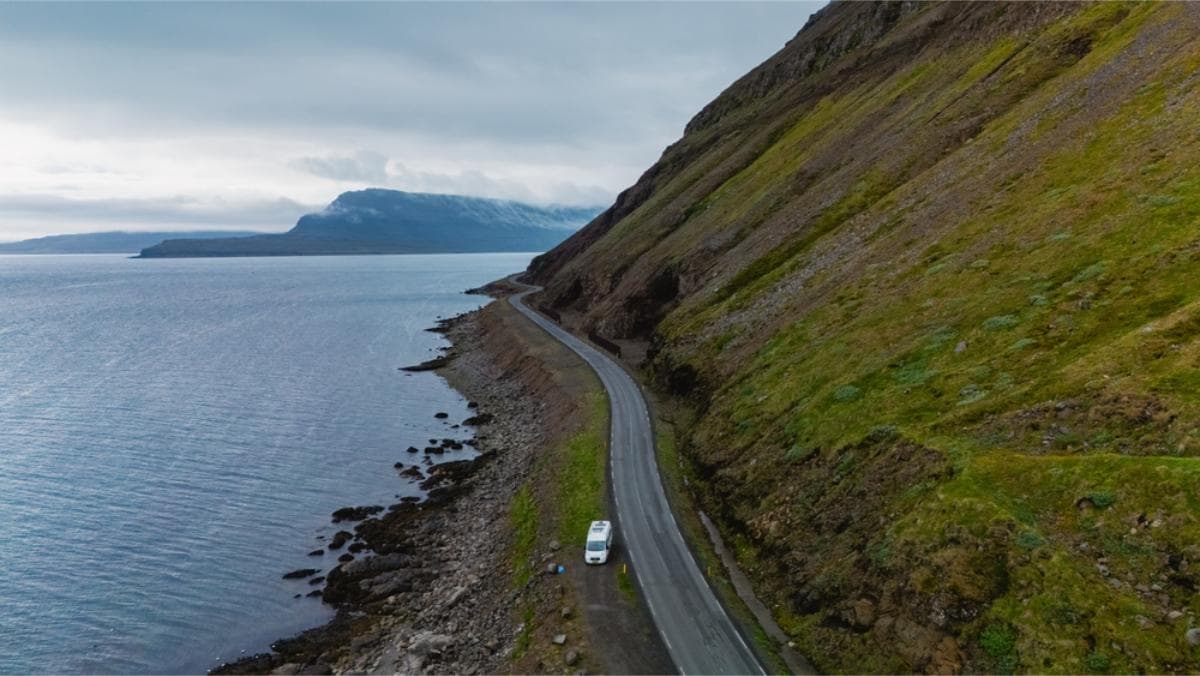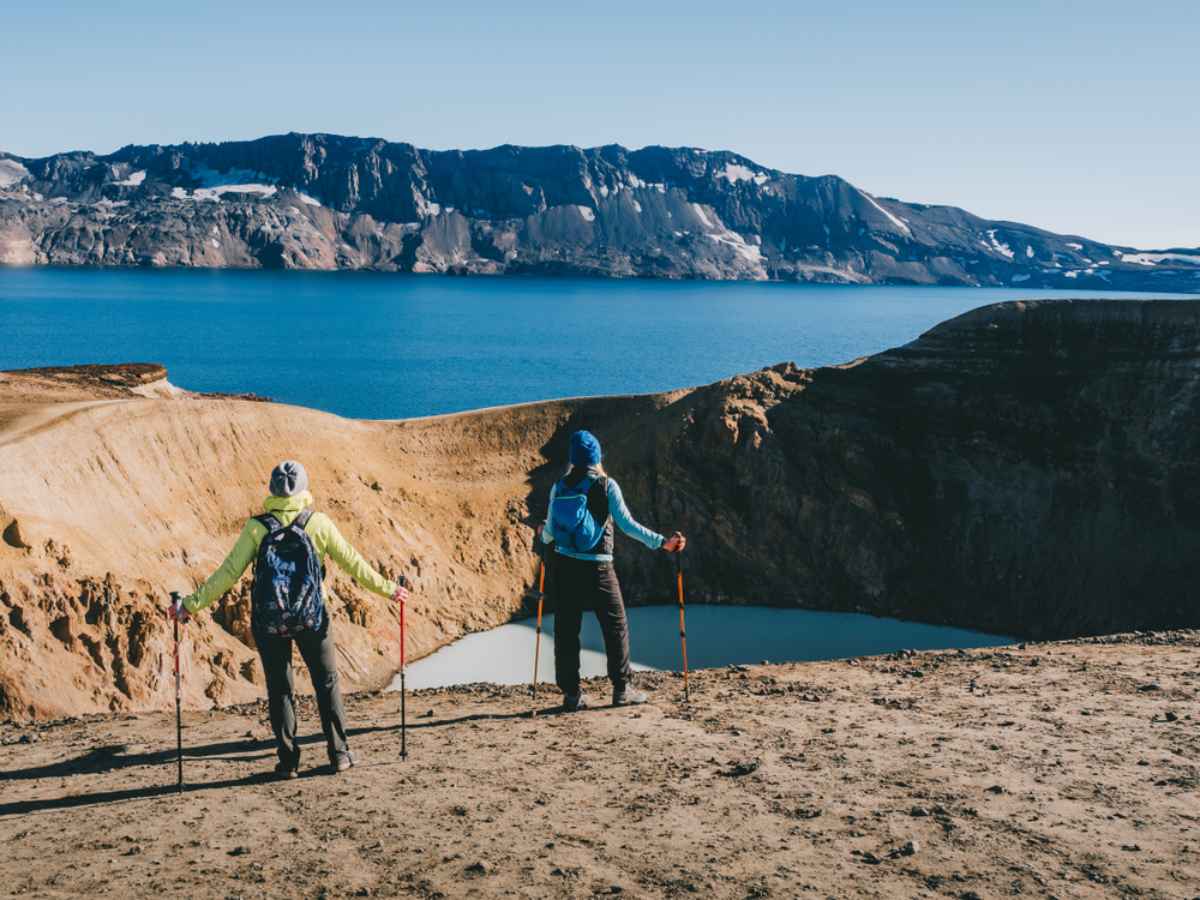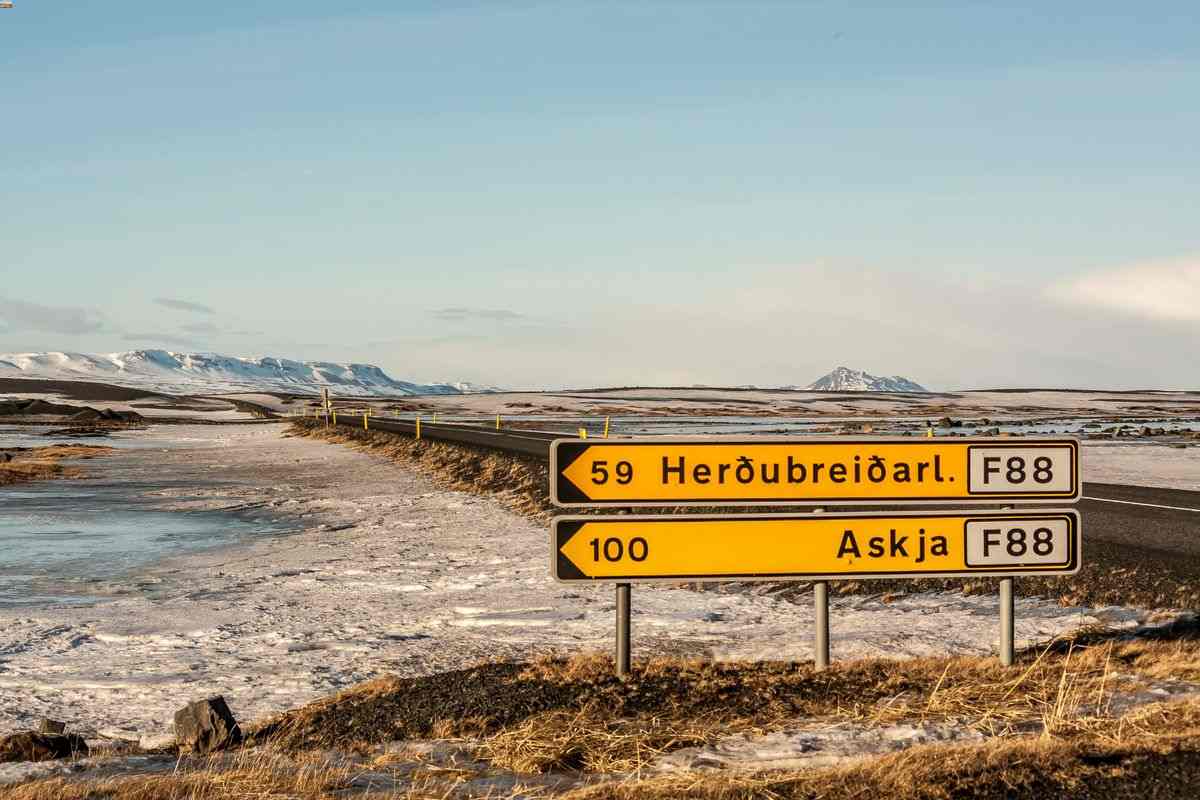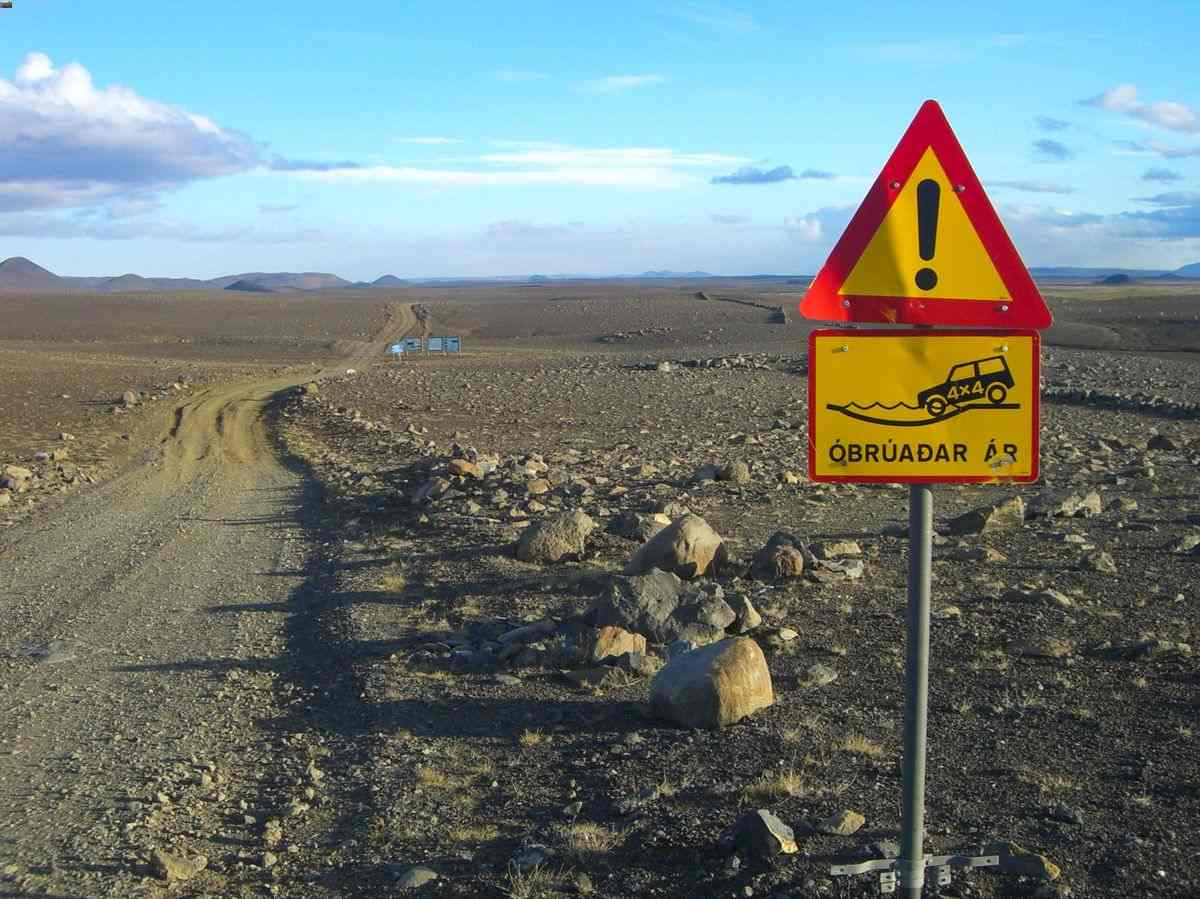
22 December
8 min read
Iceland Roads: What Google Maps Won’t Warn You About

4 April 2022
7 min read
Iceland’s tourism industry is heavily focused on its coastal regions. The country’s main highway, Route 1, or the Ring Road, connects most major towns around the island’s edges. Although there is another massive area of Iceland, known as the highlands, few visitors make it to this interior section of the Nordic nation.
Iceland’s terrain and weather conditions make the highlands difficult, and at times impossible to reach. The journey is worth it, though, as visitors can experience one of the last remaining wildernesses here. The only way to access the highlands is via unruly mountain roads called F-roads. Let’s take a look at the F88 road in Iceland and where it leads.

Before we get into F88 specifically, let’s talk about F-roads in general.
The F stands for "Fjall", which means mountain. The roads are unpaved, covered with gravel, and not often maintained. This means you’ll likely experience potholes, plenty of twists and undulations, and river crossings. The latter feature is particularly important because not every vehicle is suitable for the challenge.
Only 4x4 vehicles are permitted to drive on F-roads, but in many cases, even this mode of transport is not sufficient. To drive along this F-road, you’ll need a sturdy vehicle. Book yours at Campervan Reykjavík.
In fact, your vehicle must be high enough to drive through water up to one meter deep without flooding the engine. If you’re unsure how to handle river crossings, it’s best to leave the driving to someone else.

F-roads are closed from October to May, only opening around mid-June when conditions allow. The exact date depends on recent snowfall levels, river depth, and the general weather forecast. Check Route F88 condition’s in Iceland online before leaving to make sure it’s clear and open for travel.
Some F-roads cut across the entire interior to take you from north to south. Most, however, only travel partly into the highlands, meaning you have to go back the same way you came.
As there are little to no supply replenishment options here, you’ll have to take everything you need with you.
Make sure you have a full tank of gas/fully charged battery, as well as plenty of food and water. Warm, waterproof clothes are also a must, no matter the month or forecast, as the weather can change quickly from day to night. And now, onto F88.
Route F88, also known as Öskjuleið, begins in the northeast of the country. It is a turn-off Route 1 and will quickly transition from paved to unpaved. Prepare for a bumpy journey and for your vehicle to get covered with dust.
With all this hassle in mind, you might be wondering why you should drive this specific route in the first place. Well, at the end of it, Askja, a stunning active volcano, is waiting for you.
Route F88 is around 80 km. You’ll come to a junction with F894; turn right onto that to head to the north of Askja. There is a car park at the end of the road known as Vikraborgir.
From there, it is a 45-minute hike to reach the calderas. The going is mostly flat, but keep in mind you’re crossing a lava field. You’ll need to have decent footwear for such a venture, so no sandals or Ugg boots.

Important tips and tricks:
Bring sunglasses. In summer, Iceland experiences almost 24 hours of daylight, so you’ll need sunglasses for driving. Add to that the glare from snow during the hike, and they’ll be your favorite accessory.
Check the weather forecast. If the weather is bad, do something else. Help is far away if you become stuck, assuming you can find a phone signal. Use this website for all your weather needs.
Alternative, safer route. As mentioned above, there are several river crossings throughout F88. They are particularly deep, especially after heavy snowfall. If you’re not 100% sure your vehicle can handle them (ask us for advice), then take the alternative route.
This alternative route is via routes 901, then F905, then F910. The journey is longer and there are still river crossings but at safer parts of the river. Route 901 is a turning slightly east of F88 on Route 1.
Take your time. The road will have very few other vehicles, but that isn’t an excuse to go fast. There are many blind corners and the dust will reduce visibility. The speed limit for unpaved roads in Iceland is 80 km/h (50 miles/h).
Askja is an active volcano that last erupted in 1961. Askja translates to "caldera", which is the word used to describe the hole sometimes left behind after an eruption. Occasionally, when the magma chamber (the chamber that feeds an eruption) empties quickly, the rock above it collapses downwards. This leaves a depression in its place, similar in appearance to a crater.

Askja is such a place, in which three calderas overlap, the largest being 8 km (5 miles) wide. The calderas are filled with water, giving the largest one the name Öskjuvatn, or Askja lake. While it is not advised to swim in this, you can bathe in the water of the smaller caldera, Víti. This small hollow contains water which is about 30 °C, a fairly warm temperature.
Víti’s sides are steep and can be slippery, so make sure you have a way out before going in. With this water and any wild spring in Iceland, check the temperature with your hand before getting in. Geothermally-heated water can fluctuate between cold, warm and extremely hot. You won’t have any trouble locating Víti as its water is a bright blue color.
In addition to wild bathing, enjoy the scenery as well. The calderas are surrounded by mountains which create an incredible reflective view of Askja’s water. At this point, you’re in one of Iceland's national parks: Vatnajökull National Park, the largest protected area in Iceland, which contains Iceland’s largest glacier. There are wonderful things to see in every direction.
The F88 road in Iceland is one you don’t want to take on lightly. Ideally, you’ll have experience driving roads of this kind, and fording rivers. If in doubt, join a guided tour that will take you there, or drive on another F-road. There are many spread throughout the highlands, and all will take you to wonderful places.
Excited? You should be. Lock in your Camper rental in Iceland now to guarantee you’ll have the perfect vehicle for your adventure.
More Iceland Stories to Explore
Discover more tips and tales to fuel your next saga
Join thousands who have booked with us
Iceland's most booked campervan of 2025 is waiting. Secure yours today!
Your rental comes with:
Handy Extras
Essential Insurance Plan
Unlimited Mileage
Flexible Cancellation